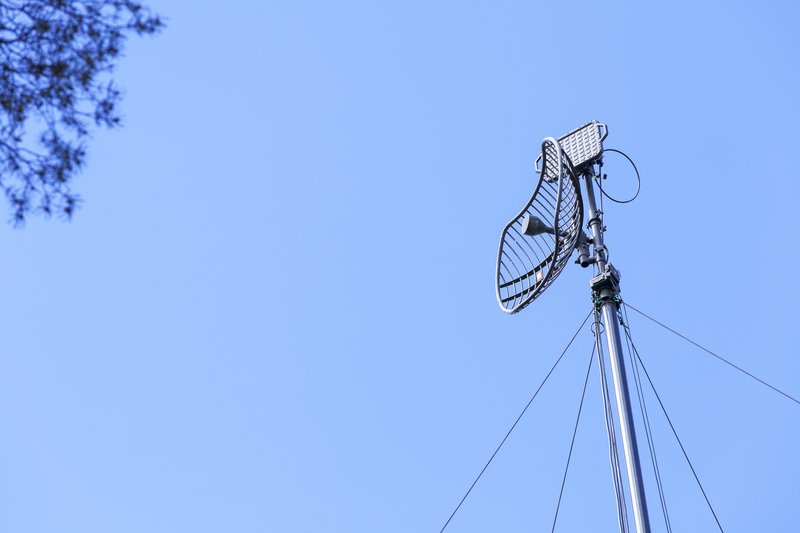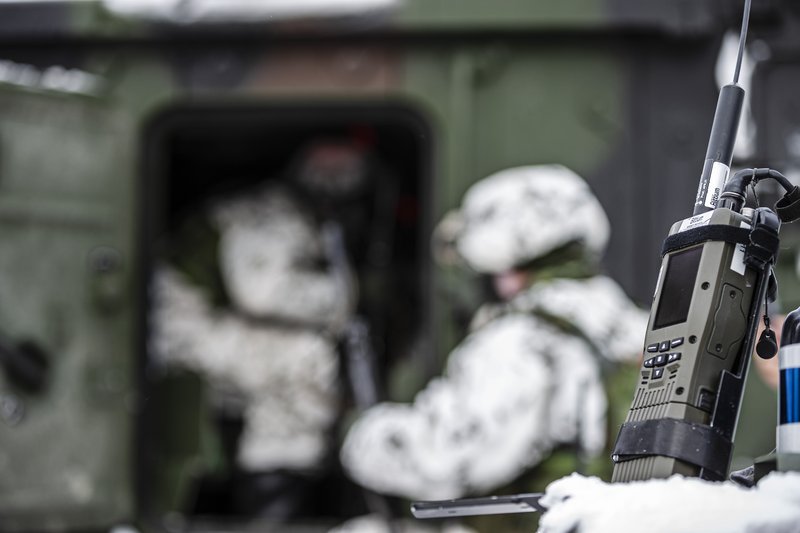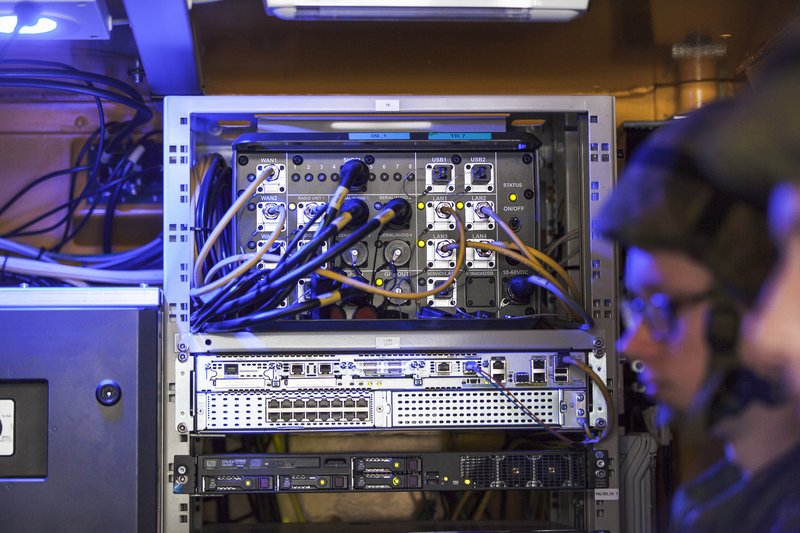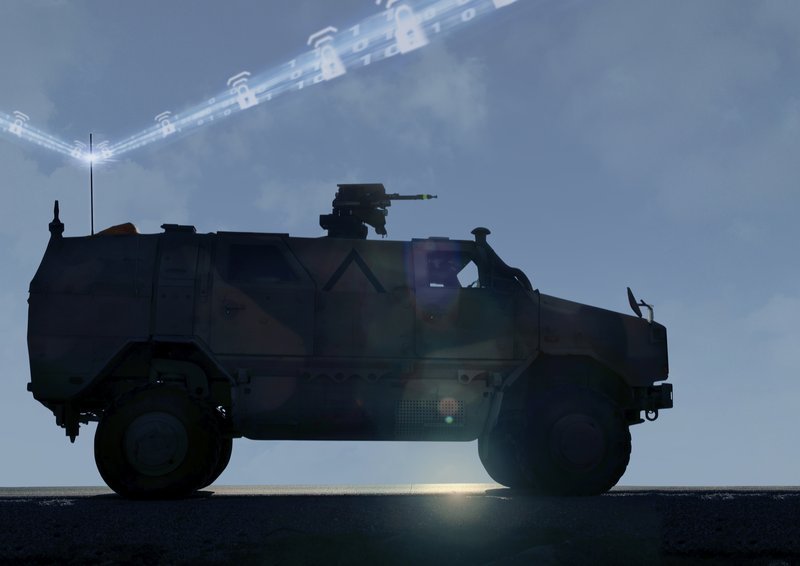Threats and opportunities: NATO demand for game-changing connectivity
This article is brought to you by Bittium
Prior to its accession into the alliance, Finland’s partnership with NATO was based upon a policy of ‘military non-alignment’. However, the country’s entry into NATO is already forging new, collaborative opportunities as the partners seek to learn from each other.
Of particular interest to NATO is Finland’s ability to assure secure and resilient tactical communications in some of the most complex operating environments and in the face of well equipped, peer adversaries. Similar constraints in connectivity are being faced by Ukraine as they continue their campaign against Russia - hence NATO’s interest in Finland’s capabilities.
In the first two decades of the millennium, NATO forces were focused on counter-terrorism and counter-insurgency campaigns in Afghanistan and Iraq where enemy combatants lacked substantial C4ISR and electronic warfare capability. Coalition operations were also smaller scale without requirement for large-scale communications networks.
But in the age of strategic competition - where peer adversaries do retain such capacity - NATO has pivoted to deploy far more resilient networks, particularly at tactical edge.
As Finland’s national champion for tactical communications, Bittium is supporting the Finnish Defence Forces (FDF) and other NATO partners with such requirements.
According to the company’s Senior Vice President, Defense & Security, Mr. Tommi Kangas, Finland already operates a “tactical communications infrastructure which absolutely satisfies the connectivity requirements of the new era”.

Above: NATO has pivoted to deploy far more resilient networks at tactical edge (Bittium)
New approaches enabled by wireless information technology
In June, Finland’s Ministry of Defence (MoD) published its latest “Materiel Policy Strategy for the Defence Administration” which underlined how the country must be able to operate “critical defence systems in all security situations” enabled by “technological know-how and materiel readiness”.
Document outlined “new opportunities in cooperation” between Finland and NATO, especially in procurement and research & development.
“Within its resources, Finland will participate in the development of NATO’s joint capabilities [and] will also appoint the necessary defence materiel experts to NATO’s structures”.
Prior to its accession, the FDF supported NATO Working Groups and exercises as a Non-Entity Partner. Examples included NATO’s Federated Mission Networking (FMN) effort and Coalition Warrior Interoperability Exercise (CWIX).
Now, NATO will have even greater potential to learn from the FDF’s tactical communications capability.
Areas of interest outlined by the MoD include digitalisation, artificial intelligence, machine autonomy and sensor technologies, which all must be underpinned by optimal levels in connectivity.
“Wireless information technology will enable new approaches and structures that place new demands on materiel policy and membership in NATO will also deepen Finland’s materiel cooperation within the NATO framework,” the document concluded.
Fully aligned with the FDF, Bittium continues to provide game-changing tactical communications solutions across the armed forces, making it ideally positioned to support requirements from NATO partners.
Suggesting Finland’s entry into NATO will not result in major changes for the way Bittium currently does business, Kangas said, but the company will receive even greater amounts of information regarding requirements which may influence product development in the future.
“Finland has a strong conscription model and reservist-based armed force but it’s still a very modern organisation. So Finland is already a strong NATO country that has since the end of the Cold War been prepared for large-scale warfare against an invading force,” he said.
“From our perspective, Finland is specifically prepared for this kind of full-scale war,” Kangas added before illustrating how Bittium solutions in service with the FDF can support a wide variety of mission sets ranging from homeland defence to special operations and expeditionary warfare.
“Bittium’s systems are designed for the type of warfare we are witnessing in Ukraine which reflects what is required by NATO and in particular, its European members,” Kangassaid before warning: “Countries that have not already invested in this kind of capability are now preparing to do so.”

Above: Battlefield digitalization requires optimal levels in connectivity (Bittium)
Meeting the requirements of a large-scale war
Bittium’s tactical communications solutions are scalable to support small to large operations, allowing commanders to reconfigure formations and mission sets at pace and across most complex operating environments. Including support of deployments featuring several brigades, each of which can be equipped with sensors and effectors which rely upon optimal levels in connectivity.
Bittium’s wideband Tactical Wireless IP Network (TAC WIN) system and waveform, as well as the handheld and vehicle-mounted Tough SDR radios using the same waveform, are ideally suited to supporting communications from brigade to frontline troops, according to Kangas.
Bittium continues to support the FDF with the provision of Tough SDR radios following a Letter of Intent signed in 2017. Worth approximately EUR130m over a 10-year period, the agreement is designed to enhance FDF’s C2 and software-defined technologies in the long term.
“TAC WIN system’s unique value as the mobile backbone network is its ability to scale,” Kangas explained. “It features same Optimised Link State Routing (OLSR) protocol as other waveforms, but it has been enhanced to host significantly more nodes than competitor mesh networks which are commonly accommodating between 10 and 200 nodes.”
Another benefit of the TAC WIN waveform is its ability to remotely reconfigure network nodes and autonomously enable their entry into the network.

Above: Bittium provides scalable networks to support deployments featuring several brigades (Bittium)
“SDRs need to be configured to allow them to access a mobile ad hoc network. In a large-scale war this reconfiguration must be automatic so nodes can enter and exit the network automatically. This is an example of Bittium satisfying requirements set by modern warfare,” Kangas said.
Other solutions include the Tough VoIP system. Also in service with the FDF and many other customers, it can be integrated in networks to provide resilient voice communications.
Elsewhere, Bittium continues to further develop its Narrowband Waveform with gradual releases. Two years ago, the FDF was authorised to purchase updated version of the waveform which will be integrated on board Tough SDRs across the services.
The Narrowband Waveform enables simultaneous transmission of voice and data messages in command networks, also over long distances and wide frequency ranges if required.
“During large-scale conflict, ability to employ also narrowband waveforms is very important. Troops need narrowband capabilities to function efficiently in the face of jamming. This includes the support of voice and short data messages.”
Narrowband Waveform supports communications with the wideband TAC WIN Waveform as well as the European Secure Software defined Radio (ESSOR) High Data Rate Waveform (HDRWF).
Bittium plays a central role in the development of ESSOR waveforms - including the HDRWF designed to encourage interoperability between coalition troops at the tactical edge. Other members of the a4ESSOR consortium in charge of developing and providing ESSOR waveforms are Indra, Leonardo, Radmor, Rohde & Schwarz and Thales.
Launch of NATO ratification for ESSOR HDRWF was announced during the NATO LOS CaT meeting in Munich, Germany, in April. Confirmation of ratification is expected by the end of 2023 which will make ESSOR a NATO-recognised waveform under the designation ‘STANAG 5651’.

Above: In large-scale war configuration must be automatic so network nodes can enter and exit the network automatically (Bittium)
Extending to NATO Customers
Today, Bittium provides tactical communications solutions to the FDF and NATO partner, the Estonian Defence Forces in addition to many other customers. But as Kangas suggested, Finland’s membership of NATO promises to encourage even greater uptake of its tactical communications solutions across the Alliance.
“Finland’s accession into NATO absolutely makes the company an even more significant supplier because it is now officially a NATO-affiliated company.”
More information on Bittium’s solutions is available here and at DSEI, booth H7-121.
More from Industry Spotlights
-
![The power of partnership: GDMS–UK deepens cooperation with the British Army]()
The power of partnership: GDMS–UK deepens cooperation with the British Army
In Conversation: Shephard's Gerrard Cowan talks to General Dynamics Mission Systems–United Kingdom’s Chris Burrows about how the company's UK TacCIS business is reshaping battlefield communications through sustained customer engagement, accelerated innovation and ecosystem collaboration.
-
![Expanded focus – unleashing the potential of commercial SATCOM for defence]()
Expanded focus – unleashing the potential of commercial SATCOM for defence
In conversation... Intelsat's Ray Lindenmayer talks to Shephard's Gerrard Cowan about the new capabilities advanced commercial SATCOM technologies can provide for military customers, and how industry and government can best work together to achieve maximum effect in orbit.
-
![Enhancing education: How CAE is embracing new technology to boost military training]()
Enhancing education: How CAE is embracing new technology to boost military training
In Conversation... Shephard's Gerrard Cowan talks to CAE's Marc-Olivier Sabourin about how the training and simulation industry can help militaries achieve essential levels of readiness by leveraging new technology, innovative procurement methods and a truly collaborative approach.
-
![Why tactical UAVs are winning on the future battlefield (Podcast)]()
Why tactical UAVs are winning on the future battlefield (Podcast)
In Conversation: In this special edition of the Shephard Defence Podcast, Tony Skinner sits down with Dan Slasky, President and CEO of Aeronautics, to explore how cutting-edge tactical unmanned aerial systems are reshaping today’s battlefields.
-
![Fincantieri’s Vulcano Class: a new era of versatility and innovation in naval operations]()
Fincantieri’s Vulcano Class: a new era of versatility and innovation in naval operations
Logistic support ships (LSS) are essential for sustained naval operations, especially during extended deployments far from home ports.
-
![Need more flexibility in battle management system delivery?]()
Need more flexibility in battle management system delivery?
Systematic’s newest solution, SitaWare BattleCloud, brings greater flexibility to combat information systems and C4ISR.

























